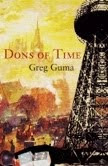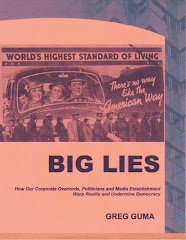Part Four of Out of This World: Death, Ghosts, and the Roots of Theosophy
Here is a final scene from the book, picking up just moments after Helena and Henry meet:
Spirit materializations! The proper description was spiritless materialism. Still, she knew that Henry was the key. At least he was searching for real answers – natural laws rather than gross superstitions.
At his request, she outlined her background: granddaughter of princes and generals, Kourland family of the Hahn-Hahns, birth in Ekaterinoslav, father a Captain, mother a writer, plus a family line that stretched back to the Crusades. She explained how, according to legend, the von Hahn name had been taken by a knight when the crowing of a hahn, or cock, awoke him just in time to prevent an ambush in the Holy Land. She described her youth, spent in St. Petersburg, Odessa and Saratov, but added that her real life had begun only when she left home for Egypt, India and Tibet.
Had he seen the dancing dervishes, she asked, or the serpent charmers of Damascus and Benares? Did he know that fakirs could tame animals with their eyes? During her wandering years she had witnessed these wonders and many more.
In Bengal, for example, she had seen an adept create a photograph of the local landscape on a dish just by staring at it. His full-color copy of nature had lasted for several days before fading away.
"How did he do it?"
"With a powerful will, I expect. Marvelous, no? Like what you've seen here."
"But you make it sound easy."
"It can be -- for those of who know how. Some people, I think, develop mental abilities that the rest of us ignore. Basically, it's a question of attitude."
"That's too simple."
"It isn't simple at all."
"And you know about these things?"
"I've seen enough to know there is a great difference between being sensitive and having real power. Let us say that a group of fakirs gathers around a lake full of alligators. I've actually seen something like this. The monsters are harmless as kittens. Why? Because the holy men can communicate with them – in fact, they can subdue the beasts. But if a foreigner, someone who is insensitive, comes within a few paces, those alligators will likely get an early dinner. What's the difference? I say it's the foreigner's attitude."
She was trying to convey the basics – awareness and regulation of the life-principle. Although Henry suspected that mediums were no more than vehicles of some greater power, he didn't yet understand the essential difference between being passive and controlling the process, the active mediation that separated the levitation of a primitive sensitive from the miracles of a sorcerer or Jesus Christ. No, he knew nothing about spiritual evolution or the astral light. This was going to take time. But at least now she had his attention.
***
Another local resident, 80-year-old Mabel Potter, was undecided. There might have been some tricks, she said, “but I don’t know. I think a lot of it was genuine, because they’d been all over that house to find out about cupboards or closets that they could use to be doing something tricky.” Although Potter moved into Horatio Eddy’s house in the 1920s, she didn’t see any ghosts. But she knew others who did. One account involved a sewing machine in the house that started up unassisted in the middle of the night.
Potter also described William Eddy in his 90s, working alone in his garden, a tall, solidly-built man who still sported a full black beard. He spent most of his life alone, living an interior existence, never marrying, and declining to indulge in the theatrical spiritualism evidently practiced by his brother and sister.
Will he be back? I asked Agnes. Although she did believe some people can see into the future, she replied, “I don’t think anybody can bring a person back to this earth. Nobody but God.” When I pressed, she added, “And who’d want to come back?”
It remains a good question, along with several others that have yet to be definitively resolved. Are spirits of the dead real? Is material existence a one shot deal? Are all such unexplained phenomena merely the result of suggestion, wish fulfillment, and clever manipulation? Or was Blavatsky on the right track?
Even today my personal quest isn’t over, in part because I still haven’t been able to explain the “journey” I mentioned at the start of this essay. It happened in October 1974, precisely a century after Blavatsky and Olcott met in Vermont.
It wasn’t the usual dream state. I felt completely present, as if it was just a normal experience in daily life — that is, until something pulled at me, and I felt myself zooming up and backward. Suddenly, I was back on the bed, being violently shaken by my panicked partner. Afterward, she told me that she feared I was dead.
Was it a vivid fantasy? Or was I taking a brief astral stroll, somehow drawn to Blavatsky and her ideas? I still can’t say for sure. But I’ve decided to keep asking questions. And, in the meantime, I choose to believe that not everything in life — or afterward — can be neatly explained.
Helena Blavatsky’s Astral Solution






























